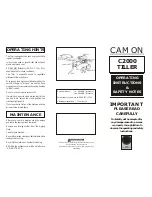
column is large and/or the pickup position can go out of reach at some point (e.g. very high
pallets). When using this mode, the lifting column position can be different at pick and place.
First, the algorithm calculates the lifting column position range from where the pick position
is reachable (lowest and highest column position) then the same calculations are performed
for the pallet target position. If the two ranges have a common intersection, a lifting column
position is chosen from the common range i.e. the same position will be used for picking and
placing the box. If no intersection is found, two lifting column positions will be chosen for the
pick and place positions respectively. Refer to the
tuning parameters for
prioritizing which side of the available range the program should prefer (e.g. keep the lifting
column as low as possible, as high as possible, keep it in the center of the possible range)
Figure 13
: selecting the best lifting column position
4.7.3 - Custom positioning - zones
It is possible to override the default behavior and take full control of the lifting column
positioning by creating a special configuration file. In this case the pallet will be split into
smaller regions and each region palletized at different lifting column positions. For full
flexibility, each pattern can have its own configuration, and optionally a global configuration
can be applied for all the remaining patterns that don't have their own settings.
See
for further information.
Please note that this mode cannot be used in combination with
4.8 - Zones
Normally the robot completes a layer before starting the next layer. However, the pallet can
be split into different regions - called zones - along the X, Y, and Z-axis. As a general rule, a
zone cannot be started until the previous zone is finished.
Version 2.9.1
© Rocketfarm AS 2021. All rights reserved.
22
















































